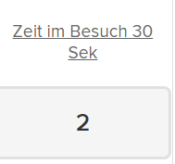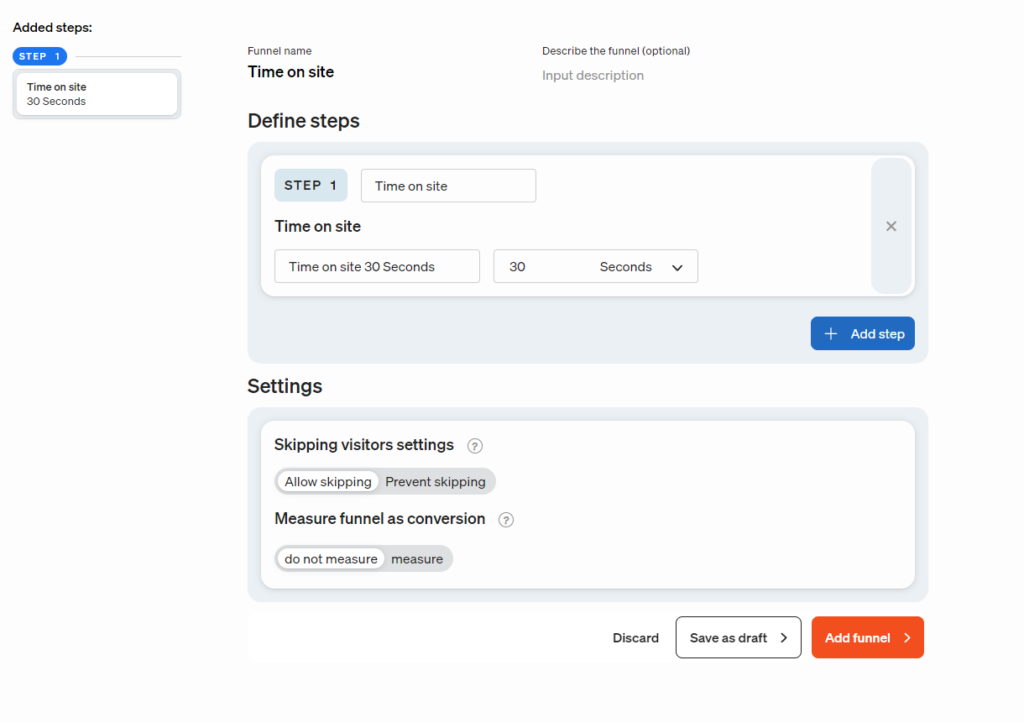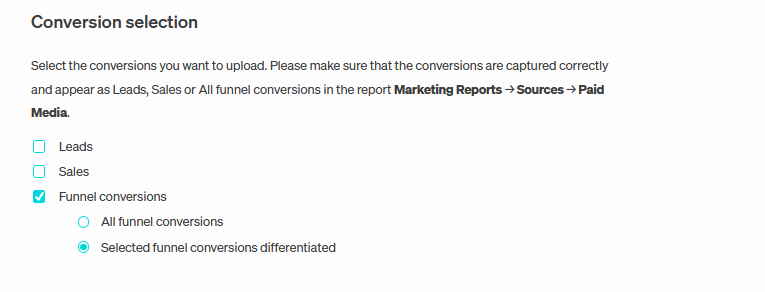If you want to know how many visitors engage more with your website by spending a lot of time on the website or visiting many pages, set up engagement funnels. Engagement funnels are especially important for news and content portals. But it can also make sense for e-commerce, SaaS or lead gen companies to measure engagement as a funnel and use it to evaluate campaign visits or even use it for bidding strategy. This is because, alongside bounce rate, engagement is an important measure of the quality of generated traffic.
Engagement funnels are formed by setting certain threshold values:
- Time or duration in visit in seconds, minutes or hours
- Number of page views in the visit
For Visit Duration, each visit that lasts longer than the specified time period (e.g. 30 seconds) is recorded as a funnel conversion. Pages per visit records every visit as a funnel conversion in which the visitor has called up at least the specified number of pages.
Even without creating specific engagement funnels, the (average) engagement on the website can be analysed at campaign level. For this purpose, these engagement key figures, among others, are automatically available in the marketing reports:


Engagement funnels also tell how many campaign visitors have spent for example at least 30 seconds on the website:


Optionally, you can also use engagement funnels to manage your Google Ads and Microsoft Ads campaigns and automatically upload them to the marketing platforms.
1. Set up Engagement funnels
In the Basic Reports menu, click on the cogwheel to the right of Conversion funnel. Click on the Copy from template under the Time on site or Pages per Visit template to create the engagement funnel. Adjust the default eintries if necessary:
- Funnel name
- Describe the funnel (optional)
- Name of the step and threshold value
- Threshold value with time unit for duration goals
The option to add a step can usually be disregarded as this is only relevant for interaction steps.
Click on Add funnel to complete the setup.


By default, up to four engagement funnels can be set up per account in this way.
2. Analysis of Engagement funnels
Set up engagement funnels automatically appear under Basic Reports → Conversion funnel.


By means of segmentation in the Conversion funnel report, the funnel conversions can be evaluated according to medium and campaign. However, you can be more flexible in the evaluation in the corresponding marketing reports.
To do this, open the desired marketing report and move the mouse over the key figure bar until the black bar for key figure selection opens with the pencil symbol and click on it.
In the selection of indicators that opens, activate the desired engagement funnel under the group of indicators Funnel conversions and click on Save.
The engagement funnel can now be analysed with all segmentation, filter and sorting options:


3. Upload of Engagement funnels to Google Ads and Microsoft Ads
Prerequisite for the upload is that the campaign links are supplemented with the specified parameters using the suffix of the final or final URL. These can be found in the upload settings, which can be accessed by clicking on the magic wand next to Paid Media in the Marketing Reports menu.
Before you generate the source URL, select Funnel conversions in the Conversion selection and the option Selected funnel conversions differentiated. In Google Ads or Microsoft Ads, you set up a suitable conversion action using exactly the same name as in etracker analytics:


In Google Ads or Microsoft Ads, you set up a suitable conversion action using exactly the same name as in etracker Analytics:


Finally, generate the source URL or renew the token (if already generated in another configuration) and insert the generated source URL in Google Ads under Tools → Conversions → Uploads → Schedules.
For Microsoft Ads, you proceed in the same way; the instructions for depositing the completion target and the source URL can be found under the Microsoft Ads tab.
If click-based optimisation has been pursued so far, the bidding strategy in Google Ads or Microsoft Ads can be adjusted.